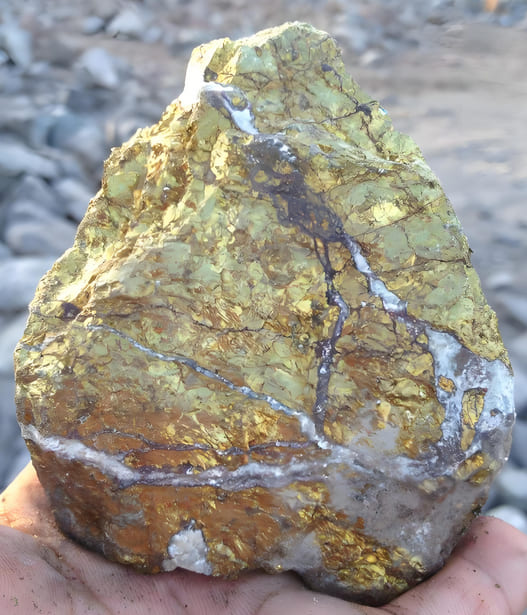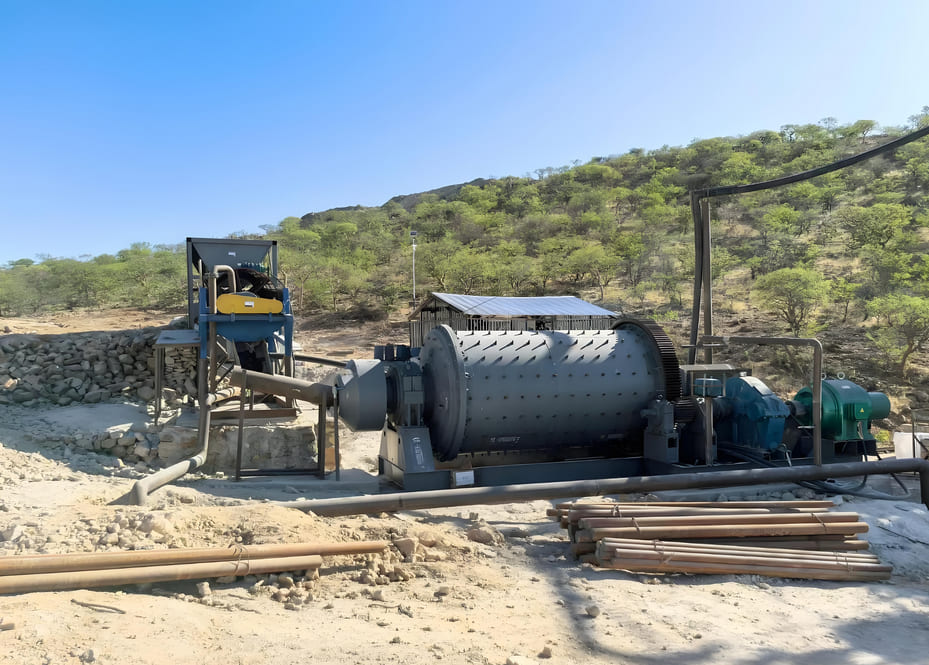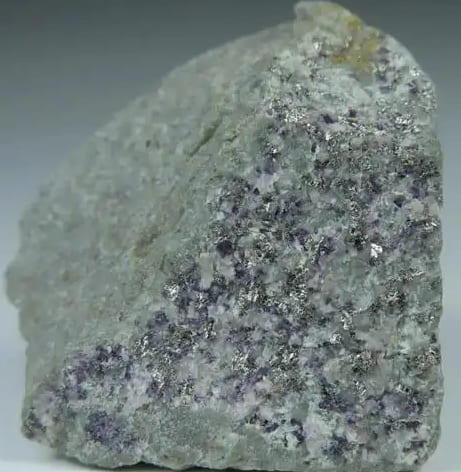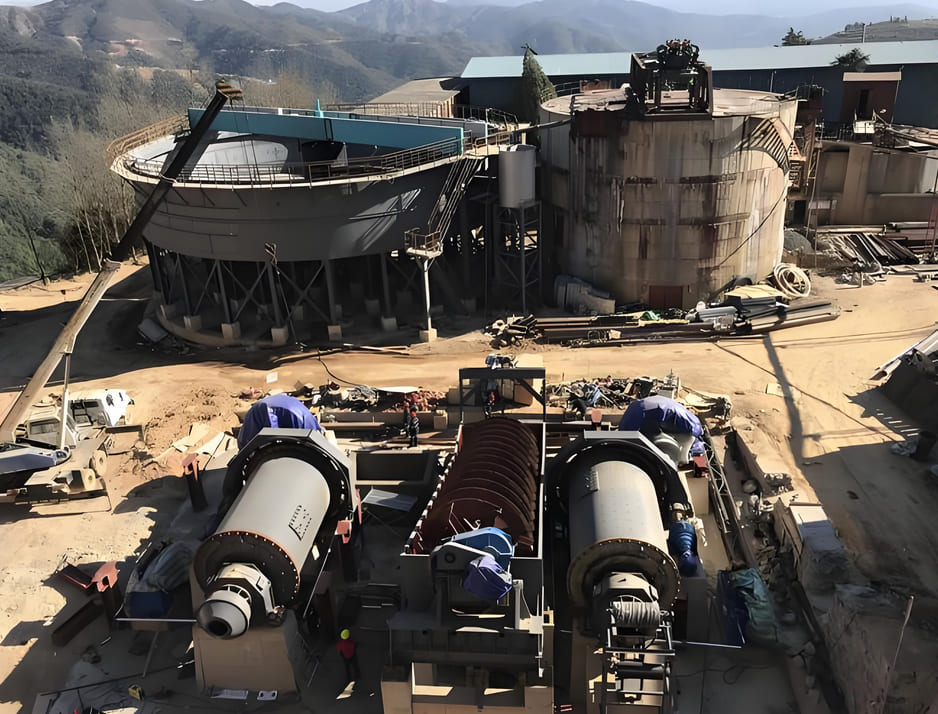Gold, as a globally strategic resource, has seen its price soar in recent years, making the efficient recovery of gold ore a top priority in the mining industry. Given the diverse types of gold ores—each with unique mineral compositions and gold occurrence states—tailored beneficiation processes are essential to maximize extraction efficiency. From low-sulfide ores to polymetallic deposits, understanding the characteristics of each ore type is key to designing an effective processing strategy. In this article, we delve into the various categories of gold ores and explore the specialized beneficiation methods suited to each.
Sulfide-poor gold ore
Key Characteristics of the Ore
Gold ores with low sulfide content (sulfide <5%) are typically quartz vein type, complex quartz vein type, or fine-disseminated type, with the following features:

Mineral Composition: Primarily quartz (75%+), minor pyrite, and occasionally trace amounts of copper, lead, or zinc minerals (usually non-economical).
Gold Occurrence:
- Coarse gold (0.1-2 mm): High proportion, often free-milling or crack-filling gold, easily recoverable by gravity separation.
- Fine-medium gold (0.01-0.1 mm): Locked in quartz or sulfides, requires flotation or cyanidation.
- Ultrafine gold (<0.01 mm): Needs fine grinding or direct cyanidation.
Challenges: Possible “nugget effect” (localized enrichment); carbonate minerals (e.g., calcite) may hinder leaching.
Efficient Processing Strategies
Tailor solutions based on gold particle size for cost-effective recovery:
1. Coarse Gold: Gravity Separation (80-95% Recovery)
Applicability: Ores with visible free gold or medium-coarse liberated gold.
Recommended Equipment:
- Knelson Concentrator: Recovers fine gold (-0.1 mm).
- Shaking Table + Jig: Combined recovery for 0.2-2 mm gold.
Advantages: Simple flow, low cost, no chemical pollution.
2. Fine Gold: Flotation-Cyanidation Combined Process (85-92% Recovery)
Applicability: Finely disseminated gold or gold associated with sulfides (e.g., pyrite).
Key Steps:
- Flotation: Uses xanthate collectors to concentrate gold-bearing sulfides.
- Cyanidation: Regrind concentrate for leaching (48-72 hrs) or direct roast-leach.
Enhancements:
- Nanobubble flotation: Boosts recovery of ultrafine gold by 10-15%.
- Staged pH control: Reduces cyanide consumption.
3. Ultrafine/Low-Grade Ores: Whole-Ore Cyanidation (86-90% Recovery)
Applicability: Low-sulfide, uniformly distributed gold, or clay-rich ores.
Optimizations:
- Fine grinding to -200 mesh (85%): Enhances gold exposure.
- Leaching aids (e.g., H₂O₂): Cuts leaching time by 30%.
- Carbon-in-pulp (CIP): Ideal for high-clay ores.
Techno-Economic Comparison
| Process | Capital Cost | Ore Processing Cost | Best Use Case |
| Gravity | Low | $12-22/ton | >30% coarse free gold |
| Flotation-Cyanide | Medium | $30-45/ton | Fine gold + sulfide association |
| Whole-Ore Cyanide | High | $38-52/ton | Ultrafine/low-grade ores |

Gold-Bearing Polymetallic Ores
Ore Characteristics
Gold-bearing polymetallic ores are primarily gold-rich but also contain valuable associated metals such as copper, lead, zinc, silver, tungsten, and antimony, offering significant potential for comprehensive recovery. Their key characteristics include:
- Complex Mineral Composition: Sulfide content typically ranges from 10% to 20%, with native gold often closely associated with pyrite, chalcopyrite, galena, and sphalerite.
- Variable Grain Sizes: Gold typically occurs as fine to ultrafine particles (often encapsulated within sulfide minerals), while copper, lead, and zinc minerals may have coarser distributions.
- High Comprehensive Utilization Value: Multiple metals can be recovered individually or in combination, improving resource efficiency.
Beneficiation Processes
Depending on the ore type and mineral composition, various beneficiation methods can be combined to ensure efficient recovery of gold and associated metals.
(1) Beneficiation of Gold-Copper-Iron Ores
Flotation-Magnetic Separation Combined Process
- Priority Flotation: Selective collectors (e.g., xanthates) are used to recover gold-bearing copper minerals, producing a copper-gold concentrate.
- Magnetic Separation for Iron: The flotation tailings undergo low-intensity magnetic separation to recover magnetite, improving iron concentrate grade.
(2) Beneficiation of Gold-Lead-Zinc Ores
Priority Flotation-Gravity Separation Combined Process:
- Staged Grinding & Priority Flotation: Gold-bearing lead minerals are recovered first, followed by zinc minerals to minimize metal contamination.
- Gravity Separation for Supplemental Recovery: For coarse free gold, shaking tables or spiral concentrators can enhance recovery rates.
(3) Beneficiation of High-Sulfur, Arsenic-Bearing Gold Ores
Pretreatment & Combined Processes:
- Bacterial Oxidation/Roasting Pretreatment: Destroys sulfide encapsulation, enhancing gold leaching efficiency.
- Flotation-Cyanidation Combined Process: Flotation recovers sulfide-associated gold, while cyanidation extracts fine-grained gold from tailings.
(4) Beneficiation of Complex Polymetallic Gold Ores
Integrated Process (Gravity-Magnetic-Flotation-Cyanidation):
- Gravity Pre-Concentration: Recovers coarse native gold.
- Flotation Separation of Sulfides: Sequential recovery of copper, lead, and zinc minerals.
- Magnetic Separation of Iron Minerals(e.g., siderite, pyrrhotite).
- Tailings Cyanidation/Carbon-in-Leach (CIL): Recovers refractory gold.
Optimization Trends in Beneficiation
- Precision Control: Intelligent technologies such as X-ray sorting and online particle size analysis for process optimization.
- Eco-Friendly Reagent Development: Low-toxicity depressants (alternative to cyanide) and efficient collectors (improving selectivity).
- Comprehensive Resource Recovery: Recovery of rare and precious metals (e.g., tungsten, antimony) from tailings to boost economic returns.
By implementing appropriate beneficiation approaches, gold-bearing polymetallic ores can be efficiently processed to maximize resource utilization and economic value.
Polysulfide Gold Ore
Ore Characteristics
High content of pyrite or arsenopyrite (both valuable and valuable for gold recovery); low and stable gold grade; fine native gold particles, often encapsulated in sulfides, making direct recovery difficult.
Ore Processing
- First, flotation is used to concentrate the gold and sulfides, ensuring a high gold recovery rate.
- The flotation concentrate is subjected to cyanidation for gold extraction, resulting in cyanide tailings that contain a large amount of sulfides.
- The tailings are subjected to secondary flotation to separate the pyrite and arsenopyrite, achieving comprehensive recovery of associated resources and improving overall economic efficiency.
Telluride-bearing gold ore
Ore Characteristics
Gold ores containing gold tellurides (e.g., calaverite, sylvanite) are a special type of gold deposit with the following key features:
Complex gold occurrence: Gold mainly exists as native gold but is also hosted in gold tellurides, often coexisting with sulfides such as pyrite and arsenopyrite.
Unique mineral composition: Typically found in epithermal deposits, with gangue minerals primarily consisting of quartz, chalcedony quartz, and carbonates.
Grindability and flotation challenges:
- Gold tellurides are brittle, leading to excessive slimes formation during grinding, which adversely affects flotation recovery.
- Fine-grained gold tellurides may be encapsulated in sulfides or gangue, requiring intensive liberation.
Harmful associated elements: Presence of arsenic, antimony, or mercury may interfere with downstream extraction.

Beneficiation Processes
To address the challenges, a stage grinding-stage flotation approach is typically adopted, supplemented by chemical methods to maximize gold recovery. Key processes include:
(1) Stage Grinding-Stage Flotation (Core Process)
Coarse grinding & rougher flotation: Primary grinding (~200 mesh) liberates gold tellurides for initial high-grade concentrate production, reducing slimes impact.
Regrinding & cleaner flotation: Further grinding (~400 mesh) of rougher concentrate enhances gold exposure, improving final recovery.
Slimes control: Efficient classification (e.g., hydrocyclones) minimizes overgrinding to mitigate slimes interference.
(2) Flotation-Gravity (Amalgamation) Combined Process
Selective flotation: Uses xanthate-based collectors under high-alkali (pH 10–11) conditions to preferentially float native gold and tellurides.
Amalgamation for coarse gold: Mercury amalgamation supplements flotation to recover coarse free gold from tails (requires strict mercury pollution control).
(3) Refractory Gold Telluride Treatment
Oxidation roasting (600–800°C): Decomposes tellurides into native gold + TeO₂ for subsequent cyanidation.
Chemical pretreatment:
- Acid/alkali leaching: Selective dissolution of tellurium (HCl/NaOH) exposes gold for cyanide leaching.
- Bio-oxidation: Utilizes acidophiles (e.g., Acidithiobacillus) to degrade sulfides/tellurides, enhancing gold liberation.
(4) Non-Cyanide Alternatives
Thiourea/thiosulfate leaching: For cyanide-resistant tellurides, employs Fe³⁺-catalyzed thiourea or thiosulfate lixiviants.
Chloride leaching: Directly dissolves tellurides from high-grade concentrates using chlorine/hypochlorite.
Optimization Strategies
Precise grinding-classification: Real-time particle size monitoring minimizes telluride overgrinding.
Novel flotation reagents: Development of telluride-specific collectors (e.g., sulfur-nitrogen reagents).
Compact flowsheets: For tellurium-rich ores, integrated “flotation-roasting-leaching” enhances economics.
Tellurium recovery: TeO₂ extraction from off-gas/leachate adds value.
A “controlled grinding-flotation first, chemical extraction as backup” strategy—combining staged flotation, amalgamation, and oxidative pretreatment—ensures efficient gold recovery while addressing environmental and resource utilization concerns.

Gold-Containing Copper Ores
Ore Characteristics
The gold grade is low, but it can be used as the primary element for comprehensive utilization. The native gold has a medium particle size and complex symbiotic relationships with other minerals, distinguishing it from polymetallic sulfide gold-bearing ores.
Ore Dressing Process
Flotation is used to co-enrich gold and copper in copper concentrate to form a copper-gold concentrate. The concentrate is then sent to a smelter for smelting, where gold is simultaneously recovered during the smelting process. This balances the utilization of low-grade gold resources with increased copper recovery, resulting in significant economic value.
In summary, the diversity of gold ores necessitates a customized approach to beneficiation. Whether dealing with refractory sulfide-rich ores, telluride-bearing deposits, or complex polymetallic ores, selecting the right processing technique—from cyanidation to flotation or gravity separation—is critical for optimal recovery. As gold demand continues to rise, advances in mineral processing technology will further refine these methods, ensuring sustainable and efficient extraction. By aligning ore characteristics with targeted beneficiation strategies, the mining industry can unlock the full potential of gold resources worldwide.
